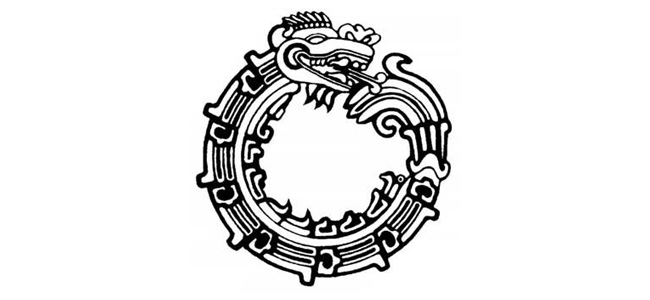The Maya developed a sophisticated calendar system. It is a system of distinct calendars and almanacs that can be synchronized and interlocked in many ways, their combinations giving rise to extensive cycles and recurrences.
The most important of these calendars is one with a period of 260 days. This 260 day calendar was prevalent across all societies. It is commonly known to scholars as the Tzolkin. The Tzolkin calendar combines twenty day names with thirteen numbers to produce 260 unique days. It is used to determine the time of religious and ceremonial events and for divination. Each successive day is numbered from 1 to 13. Separately from this, each day is given a name in sequence from a list of 20 day names.
The exact origin of the Tzolkin is not known, but there are several theories. One theory is that the calendar came from mathematical operations based on the numbers thirteen and twenty, which were important numbers to the Maya. The numbers multiplied together equal 260. Another theory is that the 260 day period came from the length of human pregnancy.
The Tzolkin is combined with another 365 day calendar known as the Haab to form a synchronized cycle lasting for 52 Haabs. The Haab was the Maya solar calendar made up of eighteen months of twenty days each plus a period of five days at the end of the year known as Wayeb.
As a calendar for keeping track of the seasons, the Haab was crude and inaccurate since it treated the year as having 365 days and ignored the extra quarter day in the actual year. Some argue that the Maya knew about and compensated for the quarter day error even though their calendar did not include anything comparable to a leap year, a method first implemented by the Romans.
The five nameless days at the end of the calendar called Wayeb were thought to be a dangerous time. During Wayeb portals between the mortal realm and the underworld dissolved. This lack of boundaries allowed the ill intending deities to cause disasters. To ward off these evil spirits, the Maya had customs and rituals they practiced during Wayeb. For example, people avoided leaving their houses or washing or combing their hair.
Because the two calendars were based on 260 days and 365 days respectively, the whole cycle would repeat itself every 52 Haab years exactly. This period was known as a Calendar Round. The end of the Calendar Round was a period of unrest and bad luck among the Maya, as they waited in expectation to see if the gods would grant them another cycle of 52 years.
Many Maya calendar inscriptions are supplemented by what is known as the Lunar Series, another calendar form which provides information on the lunar phase and position of the Moon in a half yearly cycle of lunations.
A 584 day Venus cycle was also maintained, which tracked the appearance and conjunctions of Venus as the morning and evening stars. Many events in this cycle were seen as being inauspicious and baleful, and occasionally warfare was timed to coincide with stages in this cycle.
Other less prevalent or poorly understood cycles and calendar progressions were also tracked. An 819 day count is attested in a few inscriptions, and repeating sets of 9 and 13 day intervals associated with different groups of deities, animals and other significant concepts are also known.
The repetition of the various calendric cycles, the natural cycles of observable phenomena, and the recurrence and renewal of death and rebirth imagery in their mythological traditions were important and pervasive influences upon Maya societies. This conceptual view in which the cyclical nature of time is highlighted was a preeminent one, and many rituals were concerned with the completion and reoccurrences of various cycles.
As each particular calendaric configuration was once again repeated, so too were the supernatural influences with which they were associated. Thus it was held that particular calendar configurations had a specific character to them, which would influence events on days exhibiting that configuration. Divinations could then be made from the predictions associated with a certain configuration, since events taking place on some future date would be subject to the same influences as its corresponding previous cycle dates. Events and ceremonies would be timed to coincide with auspicious dates, and avoid inauspicious ones.
The completion of significant calendar cycles were often marked by the erection and dedication of specific monuments such as the twin pyramid complexes in Tikal and Yaxha. Ceremonies commemorating the completion of cycles accompanied the dedication and resulting functions of these structures.
A cyclical interpretation is also noted in Maya creation accounts, in which the present world and the humans in it were preceded by other worlds which were fashioned in various forms by the gods but then destroyed. The present world also had a tenuous existence, requiring the supplication and offerings of periodic sacrifice to maintain the balance of continuing existence. Similar themes are found in the creation accounts of other Mesoamerican societies.
Since calendar dates can only distinguish in 18,980 days the cycle repeats roughly once each lifetime, and a more refined method of dating was needed if history was to be recorded accurately. To measure dates over periods longer than 52 years, Mesoamericans devised the Long Count calendar.
The Mesoamerican Long Count calendar forms the basis for a New Age belief, first forecast by Jose Arguelles, that a cataclysm will take place on or about December 21, 2012, a forecast that mainstream Mayanist scholars consider a misinterpretation.


